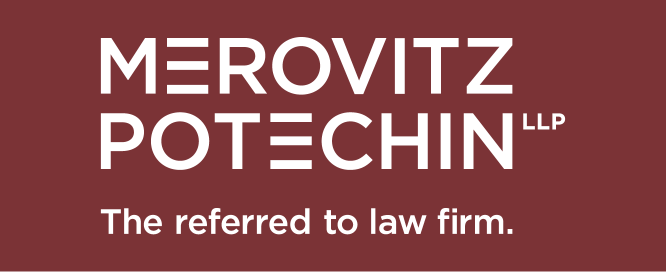Categories
Assignment of Residential Real Estate Transactions – Part 3 of 3

This is the final installment in our three-part series on assignment of residential agreements of purchase and sale. If you have not done so already, click HERE to read part 1 and HERE to read part 2.
In part 1, we discussed the circumstances where the option for a purchaser to assign their interest in an APS is available. In part 2, we explored risks to an assignor and instances where they may still be held responsible for the transaction to close, even though they are no longer the buyer in the transaction.
In part 3 below, we will discuss the legal mechanisms by which assignment is completed. Although this topic can be quite technical, it is important for purchasers to be aware that the method of assignment makes a difference. Purchasers interested in assignment may be well suited to discuss these topics with their real estate lawyer to ensure the assignment is validly completed and they are informed about the protections available to them in assignment.
Part 3: The Method of Assignment makes a difference
In practice, assigning one’s interest in an APS can be completed in a handful of ways, each of which having unique benefits and drawbacks. Be sure to speak with your real estate lawyer about which option is best suited for you.
The Ontario Real Estate Association (“OREA”) provides standardized forms helpfully titled “Assignment of Agreement of Purchase and Sale” (form 145 for general purposes, and form 150 for condominiums). These forms contain boilerplate clauses which can be used to validly assign an APS from one purchaser to another where assignment is available in the APS. However, it is important to keep in mind a few items that the OREA standard forms omit: a) participation of the vendor, and b) indemnity clauses between assignor and assignee.
Consider, for example, if the APS is silent as to the availability of assignment (as is the case in most re-sale transactions) and the purchaser wants out of their deal. They find a new purchaser and execute a standard OREA assignment form. They do not get the vendor’s consent, nor do they involve the vendor in the assignment agreement – there is no requirement to do so, and the purchaser’s interest has been validly assigned. The vendor’s lawyer is informed of the assignment, but on the day of closing the assignee fails to complete the transaction. The vendor then re-lists the property and sells it for $50,000 less than what was originally agreed to.
In this scenario, the vendor would be in the position to pursue both the assignee and the assignor for their losses. The assignor would be equally liable to compensate the vendor for the assignee’s failure to close because a) there was no provision in the APS explicitly permitting assignment, b) the vendor was not aware of, or involved in the assignment agreement, and c) the assignee did not indemnify the assignor.
This is not to suggest that the OREA assignment agreement forms should never be used – to the contrary, the forms are effectively drafted in order to facilitate assignment in a practical manner. They are especially helpful in the case where the assignor and assignee are related in one way or another. For instance, where the assignor is an individual and the assignee is that individual’s business, a simple assignment could be easily completed without the trouble of involving the vendor.
However, in circumstances where a purchaser is assigning their interest in an agreement to an unrelated assignee, or there are other reasons to be concerned that the transaction may fail (resulting in the assignor’s continued liability), the OREA forms should be supported by a simple indemnity agreement drafted by a lawyer. For more information about what an indemnity agreement is and how it works, you should speak with a real estate lawyer.
As an alternative to the OREA assignment agreement forms, parties may elect to amend the terms of the APS itself in order to completely remove the previous purchaser and substitute them with a new purchaser. Where the OREA APS is used, this can be completed via the companion form 120 titled “Amendment to the Agreement of Purchase and Sale”. Where a long-form APS is used, an amending agreement can be drafted and implemented by the parties’ lawyers.
Amending the APS will require the consent and participation of everyone involved, including the vendor. Even though the vendors’ participation may not be strictly required for assignment, a purchaser looking to get out of their deal may choose to proceed by amending the APS with the consent of the vendor (rather than by an assignment) in order to remove themselves completely from the APS and side-step any related liability. Again, this method could be well complemented with an indemnity agreement between new and old purchasers, but that may not be required in all circumstances.
As a further alternative, parties have the option to prepare their own assignment agreements drafted by their respective lawyers, which can build in indemnity clauses to directly address future liability.
Key Takeaways
- The standard OREA “Assignment of Agreement of Purchase and Sale” form does not require consent or participation of the vendor and does not automatically indemnify the assignor from ongoing liability in the sale.
- Amending the APS itself may be a practical alternative solution to substitute purchasers, if everyone involved in the deal agrees.
- Purchasers exiting a transaction should consider whether they need to obtain an indemnity agreement from the new purchaser.
- Speak with a real estate lawyer about the method of assigning your deal.
The content on this website is for information purposes only and is not legal advice, which cannot be given without knowing the facts of a specific situation. You should never disregard professional legal advice or delay in seeking legal advice because of something you have read on this website. The use of the website does not establish a solicitor and client relationship. If you would like to discuss your specific legal needs with us, please contact our office at 613-563-7544 and one of our lawyers will be happy to assist you.







